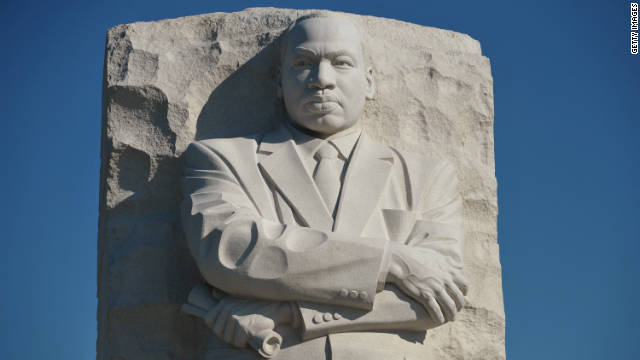My name is Laura L. (as opposed to Laura G.), and John B. Saul was my professor in Fall 2008 when I was a student in the School of Journalism at the University of Montana.
He took on the Herculean task of beating my boring, boorish and backward copy into something more bearable. Three years later, I am still trying to improve my writing - an undertaking that is never-ending and now more difficult without such a guiding hand.
But I enjoy the process, and if it takes a lifetime of trial-and-error to become fractionally better, there are worse ways to spend a lifetime.
Now that the introductions are out of the way, I would turn your thoughts to paraphrasing.
Every writer has to try to condense a source's comments to write a compelling story. The use of too many direct quotes can slow the pace of prose.
But writers must use caution when paraphrasing, because if key details are lost, so is the intended meaning.
Case and point: the inscription that is now on the sculpture at the new Martin Luther King Jr. National Memorial. The inscription paraphrases part of one of King's speeches, but Roy Peter Clark and others argue the paraphrase is inaccurate. Unfortunately, now it is literally carved in stone.
King's time was recent enough that people are still fa
 miliar with his speeches, and some know better than to trust the inscription. But as time goes by, that could be less the case, especially considering how often incorrect information is perpetuated on the Internet.
miliar with his speeches, and some know better than to trust the inscription. But as time goes by, that could be less the case, especially considering how often incorrect information is perpetuated on the Internet.So if a writer wants a story to be accurate - every nonfiction writer should want that - pay particular attention to paraphrasing. The treasury of history depends on veracious retelling.
north face uk, hollister pas cher, vans pas cher, michael kors, michael kors outlet online, michael kors outlet, uggs outlet, nike air max, replica handbags, nike air max uk, new balance, nike roshe run uk, michael kors outlet, ray ban pas cher, ralph lauren uk, coach outlet, polo lacoste, timberland pas cher, nike air max uk, uggs outlet, true religion outlet, coach purses, mulberry uk, abercrombie and fitch uk, burberry handbags, michael kors, converse pas cher, guess pas cher, michael kors outlet, sac vanessa bruno, lululemon canada, true religion jeans, nike air force, true religion outlet, nike blazer pas cher, coach outlet store online, nike tn, burberry outlet, michael kors outlet online, hogan outlet, michael kors outlet online, kate spade, michael kors outlet online, north face, nike free uk, oakley pas cher, true religion outlet, ray ban uk, hollister uk
ReplyDeleteralph lauren, new balance shoes, ghd hair, oakley, hollister clothing, north face outlet, nike air max, louboutin, gucci, valentino shoes, lululemon, nike air max, ray ban, nike roshe run, nfl jerseys, north face outlet, soccer jerseys, celine handbags, iphone cases, hermes belt, vans, beats by dre, p90x workout, lancel, mcm handbags, ferragamo shoes, soccer shoes, nike trainers uk, longchamp uk, hollister, babyliss, wedding dresses, herve leger, vans outlet, nike huaraches, hollister, converse, instyler, timberland boots, asics running shoes, converse outlet, chi flat iron, reebok outlet, bottega veneta, insanity workout, jimmy choo outlet, mont blanc pens, abercrombie and fitch, mac cosmetics, baseball bats
ReplyDeletelouis vuitton, juicy couture outlet, canada goose, canada goose, ugg,uggs,uggs canada, ugg uk, canada goose outlet, pandora jewelry, pandora uk, replica watches, thomas sabo, canada goose outlet, toms shoes, canada goose uk, supra shoes, louis vuitton, montre pas cher, links of london, canada goose, moncler, swarovski crystal, juicy couture outlet, pandora charms, karen millen uk, doudoune moncler, moncler outlet, marc jacobs, wedding dresses, ugg,ugg australia,ugg italia, louis vuitton, moncler outlet, pandora jewelry, louis vuitton, coach outlet, canada goose outlet, ugg, louis vuitton, moncler, moncler uk, swarovski, hollister, moncler, canada goose jackets, moncler, ugg pas cher
ReplyDelete